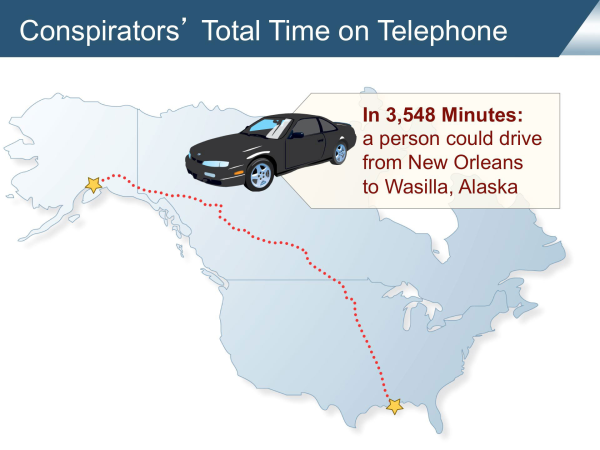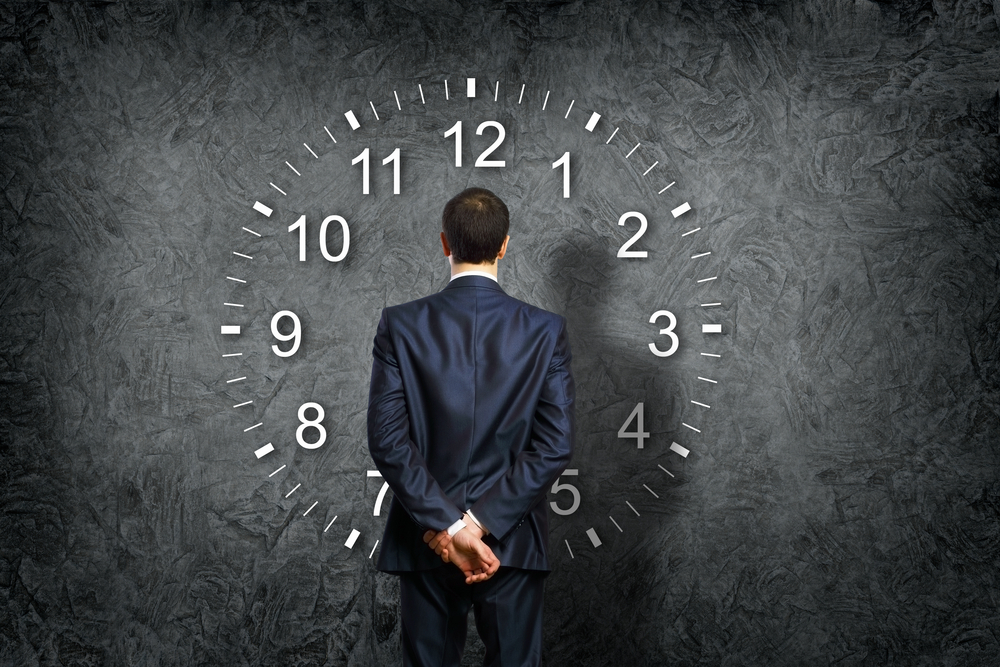I enjoy an interesting turn of phrase and an interesting bit of trivia more than most people. So, for me, I'm especially delighted when someone can find a way to combine trivia and language in a memorable way. Fortunately, in the litigation graphics and jury consulting business, there are many opportunities to do just that.
At A2L, we are routinely challenged with finding a creative way, both visually and with words, to explain complex topics like volume, speed, amounts, and scale. We have written about some of these methods in articles like Explaining a Complicated Process Using Trial Graphics, Antitrust Litigation Graphics: Explaining Complex Information Simply, and 6 Ways to Convey Size and Scale to a Jury.
Explaining time presents unique challenges. Sometimes you need to emphasize how long ago something occurred, sometimes you need to show how close in time two events are, and sometimes you want to show how far apart two events are. This is why timelines are used in most trials, but sometimes that simple litigation graphic is not enough to be memorable.
These five tips with examples discuss different time comparisons that can come in handy when preparing for trial.
1. Explaining (orally) something happened a long time ago: If you want to explain something is old or occurred a long time ago with words, you can relate it to something everyone automatically agrees is old. For example,-
-
- Bernie Sanders, Michael Bloomberg, and Joe Biden were all born closer to the Civil War than today. Hard as that may seem to believe, it's true and very memorable. I don't share that with any political intent, I promise. These men are people to admire for various reasons. What's interesting is that you'll probably repeat this fact to someone else, which is exactly the same behavior we want from jurors. That's the power of an original and surprising time comparison.
- Oxford University is older than the Aztec Empire, The Incas, and the printing press. This fact is similarly surprising. To most, the Aztecs and the Incas seem ancient. In a way, they are. But Oxford opened its doors in 1049.
- Humans and the T-Rex lived closer in time than the T-Rex and the Stegosaurus.
- I founded A2L Consulting about a year after Jeff Bezos founded Amazon. I keep telling myself I can still catch up.
- Bernie Sanders, Michael Bloomberg, and Joe Biden were all born closer to the Civil War than today. Hard as that may seem to believe, it's true and very memorable. I don't share that with any political intent, I promise. These men are people to admire for various reasons. What's interesting is that you'll probably repeat this fact to someone else, which is exactly the same behavior we want from jurors. That's the power of an original and surprising time comparison.
-
2. Explaining the passage of time: A2L was engaged by the Justice Department to help explain how several individuals conspired to win government contracts by illegally sharing information on the telephone. A defense was raised that they didn't really speak by phone that often. Using an election year reference to the home of Sarah Palin, we explained that the conspirators had spent 3,548 minutes on the phone. That number by itself would probably mean nothing to a jury. We translated that fact into a memorable litigation graphic that showed that in 3,548 minutes, someone could drive from New Orleans (site of the trial) to Wasilla, Alaska (the election year reference). The implication was, of course, that in that amount of time, a lot of conspiring could be accomplished. They were convicted.

3. Explaining (visually) something happened a long time ago: This challenge comes up frequently in cases we work on where a company is accused of doing something perfectly legal in the past that today seems horrible. Whether it is environmental dumping or doctors advertising the benefits of smoking, things were different many decades ago. But getting a jury - especially a millennial jury - to think in this way is not easy. It's much easier to apply today's standards to yesterday's behaviors.
The technique we use most often to try to take the jury back in time is by using photographs and stories. In my experience, old videos and now shocking facts do work, but I find it really takes a lot of imagery to transport someone back in time. A trial lawyer friend facing a similar challenge showed a jury his photo from the 1960s to add levity, build rapport, and to help show how long ago the 1960s were.
4. Explaining that two events occurred close in time. Very frequently, we are asked to show how close in time two events occurred, sometimes blurring correlation with causation. A top-bottom timeline helps with this challenge (see, 3 Excellent Ways to Use “Top-Bottom” Timelines in Trial). But if you can combine that style of timeline with a clever trope, you can create something truly memorable. Consider adding a fact from outside the case like the moon landing or a presidential election to your timelines to help set the stage. Some more interesting factoids that might prove useful if for no other reason than to say, sometimes the mind can be tricky in the way it processes time include:
- If Elvis were still alive, he would be younger than William Shatner.
- Woolly mammoths still existed when the Pyramids of Egypt were built.
- If Martin Luther King, Jr. and Anne Frank were still alive today, they would all be about the same age as Barbara Walters.
5. Betty White. No time comparison is complete without a Betty White reference, and she turned 98 yesterday. She was born in 1922, twenty years before President Trump. She first started acting on TV in 1939 - two years before Pearl Harbor.






Leave a Comment